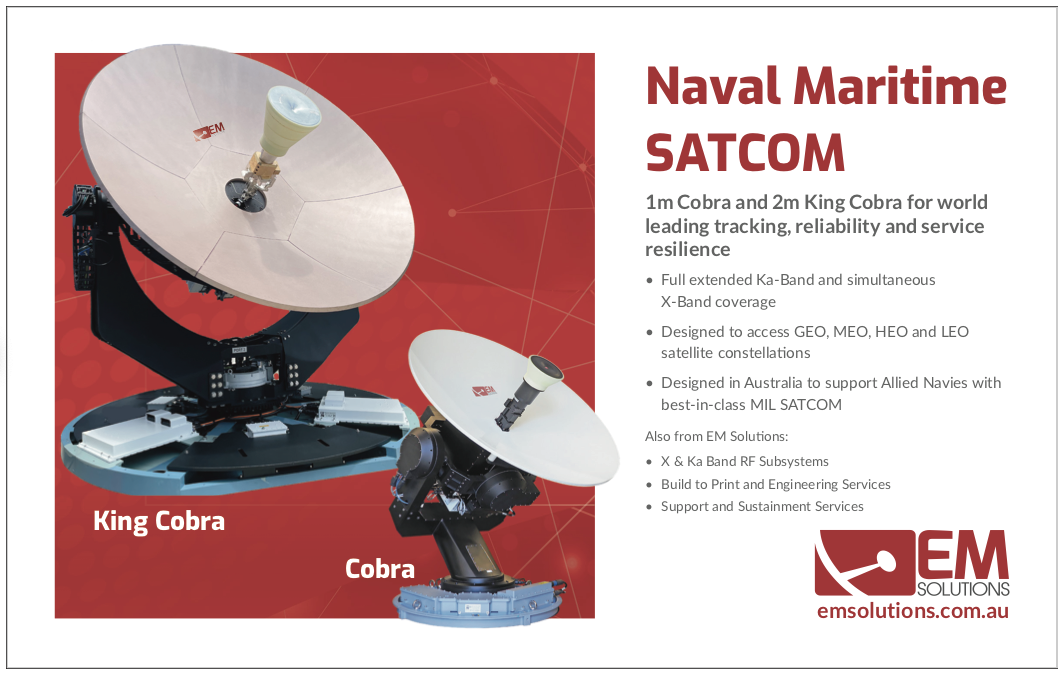General Thompson: U.S. Space Force transitioning to combat-ready phase
Since its inception in late-2019, the U.S. Space Force’s primary focus has been to carefully design the blueprints for a resilient space architecture, while also laying the groundwork for the training and retention of a capable military force. As the Space Force’s fourth birthday approaches, senior military leadership are actively making the transition from branch establishment to a new phase – presenting a combat- ready force that has the offensive and defensive space capabilities required to protect the domain.

During a recent Mitchell Institute Schriever Spacepower Forum, General Kevin P. Chilton (Ret.) pointed out to General David D. Thompson, Vice Chief of Space Operations at the U.S. Space Force (USSF), that space has shifted away from being a benign domain to an extremely competitive operating environment.
In response to how the force is maturing as an organization and responding to the level of activity in the domain, Gen. Thompson said, “We are very much clearly in the next chapter of the Space Force…[Now] the mission of the Space Force is to deliver on the capabilities and the promises that we’ve made as part of the establishment.”
Gen. Thompson explained that the USSF is indeed responding to the changes in the space domain by having a combat-ready force with advanced testing, training, and the ability to deliver warfighting capabilities. Gen. Thompson attributes a lot of this forward momentum to the Assistant Secretary of the Air Force for Space Acquisition and Integration, Frank Calvelli, who was appointed to his position last year.
“He has brought us perspective and insight, and [has driven] a real change to how we look at space acquisition,” said Gen. Thompson. “[Calvelli is] focusing on simplifying, delivering, and meeting our promises in terms of the capabilities we deliver on time and on cost.”
Part of delivering those capabilities is the continuous development and deployment of a resilient space architecture, a key priority that Space Force leadership has been focusing on since the branch’s founding.
Gen. Chilton asked Gen. Thompson about how the Space Force has been approaching the development of its architecture in a way that can withstand a possible “first-mover” strike by an adversary. Gen. Thompson explained that a proliferated architecture is where the answer resides.
“I would say distribution and proliferation in all of its elements,” said Gen. Thompson. “We certainly think about proliferated architectures in a very narrow sense, like having a large number of satellites in one orbital regime. [We must] distribute those capabilities across multiple regimes, which means that an adversary — if they’re going to attack you in space — has to have a very sophisticated and synchronized means of attack.”
Another approach that Gen. Thompson believes can eliminate strategic surprises from adversaries is to adopt a “new understanding” of space domain awareness.
“[We must be] truly thinking more carefully about what it means to fully understand what’s happening in the domain, especially a direct-focused perspective on space domain awareness,” said Gen. Thompson. “As the human race continues to expand out into the solar system, the moon, and beyond, we believe our responsibility is to understand what’s happening in the domain.”
A critical component of being one step ahead of an adversary in the space domain, according to Gen. Thompson, is having a level of resiliency that will ensure that warfighters — across all services — can continue their operations in cases of degradation or denial in the space environment.
“I’m not one who believes that degradation or denial of use of space will occur broadly and over a long period of time,” said Gen. Thompson. “But understanding where the reliance is, and how [the military services] might operate in that environment, is the first piece of it.”
This rapidly changing threat environment that Gen. Thompson describes is something that the industry has taken notice of and has been testing services and solutions specifically designed to promote military resiliency in the space domain.
As Gen. Thompson pointed out, there is currently a need among all military branches to have continued and uninterrupted delivery of space-based services, especially during adversarial attempts to degrade or deny space capabilities. For example, if an adversary were to successfully jam or degrade a satellite’s ability to provide connectivity to warfighters on the ground, it is imperative that the military be able to roll connectivity and services over to another satellite, in order to have uninterrupted and unaffected operations.
In March of this year, SES, Hughes, and ThinKom, came together to test space capabilities that could transform how the military strategically leverages SATCOM services. The three companies held a demonstration that effectively illustrated the ability of an end satellite user to seamlessly roam between satellite services originating in different orbits and leveraging different frequency bands. This verified capability speaks directly to the DoD’s need for the distribution of services across “multiple orbital regimes,” as Gen. Thompson described.
According to Ben Pigsley, SVP of Defense Networks at SES Space & Defense, “The military is facing near- peer adversaries that have demonstrated their ability to disrupt, deny, and degrade our communications networks. In today’s environment, government networks are both congested and contested with deliberate and directed jamming, cyberattacks, and kinetic attacks.”
When asked about SES Space & Defense’s successful multi-orbit testing and how the DoD could leverage those capabilities, he said, “Both multi-orbit and multi-band network solutions offer an elevated level of resiliency and increase availability to government customers. Higher availability is critical to the command-and-control networks operated by the DoD…The military’s industry partners are ready to support both multi-band and multi-orbit operations.”
Select the image below to watch the Spacepower Forum video in its entirety.

This article first appeared in Government Satellite Report and is republished with permission of GSR and SES Space & Defense.
Author David Presgraves is a Staff Writer for GovSat Report, in addition to several other online publications dedicated to defense, military, and federal government agency technologies.



